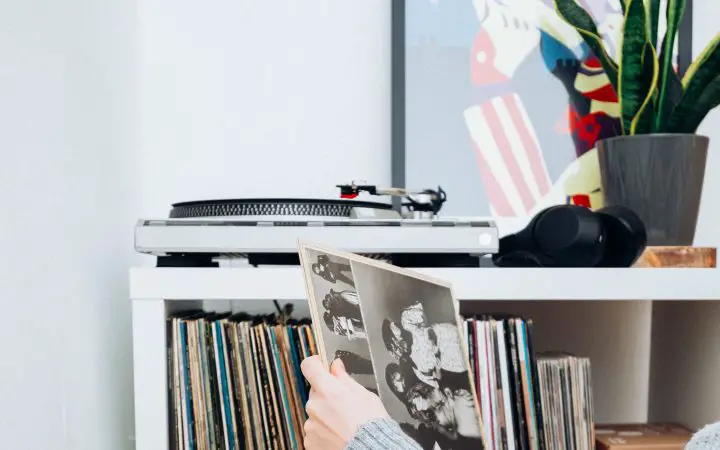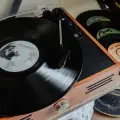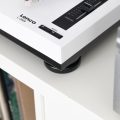Are pesky external vibrations getting in the way of your listening experience? Are you, however, a little too short on cash to fully invest in a ‘proper’ isolation platform? Want to learn how to make a DIY turntable isolation platform with bits lying around the house?
Then step forth as we explore why you might want to create your own isolation platform as well as some of the more common methods for doing so.
Table of Contents

Why Build Your Own?
If you have tried everything else to isolate your turntable from the vibrations from the speakers without actually buying a dedicated isolation platform, then perhaps this is the way you want to go. An acrylic turntable mat will do a decent enough job of it, but sometimes they just are not enough.
For what they are, isolation platforms can be rather expensive. Besides, what are they aside from a butcher block and some rubber balls? Those things should not cost as much as they do. Take the IsoAcoustics isolation platform, for example. This thing costs around $200 new and does not even let you know the well-known member location.
It is, therefore, the opinion of many online forums that you can create your own isolation platforms from, say, bamboo cutting boards that still operate at a similar sound quality.
When purchasing anything you are arguably purchasing the expertise that went into the product as well as any of the technological innovations that it utilizes. This is also the case for isolation platforms whose isolation properties are pressed into each product. It is simply the opinion of many audiophiles that you can create your own, keeping those low frequencies under control as in a CD player while still just using a maple block without the esteemed Sorbothane feet.
Perhaps your fancy Rega turntables do not even need this kind of protection, but it is our experience that most turntables do.
Different Methods
Just one look at some of the many forum posts dedicated to this topic will be enough to convince you of just how many different methods there are to create your own isolation platform. It is, after, called Do It Yourself for a reason, and the audiophile community has certainly rejoiced around this concept.
The main culprits will usually be constructed from some kind of wood. This often comes in the form of a cutting board that is already cut into a shape that readily resembles the contours of a turntable. People have, for example, been especially noted to use a bamboo cutting board for its so-called acoustical properties.
There have been, however, exceptions to these rules. One user, for example, has noted that they chose to go super cheap but no less effective by using a square of carpet padding with a hockey puck under each foot of the turntable. Pretty ingenious, no?
A more humorous response on some forums has been to buy the house next door and then run cables through the wall, thereby isolating the turntable from the speakers themselves. Needless to say, this would not work unless you were a) able to afford such a move in real estate and b) also able to afford a butler of some kind to change the record on a whim through the wall.
There are plenty of smart ways to get the job done. How you do so is completely down to you.
Final Tones
So, there you have it! Hopefully, you now have everything you need to get started isolating those pesky external vibrations yourself, free of charge!
FAQs DIY Turntable Isolation Platform
Do I need a turntable isolation platform?
This depends on whether or not your turntable is suffering at the whim of extraneous vibrations. You will be able to tell this by the way that it handles the playing of a record. If, for example, the needle is sensitive and tends to pick up the vibrations from neighboring rooms, then chances are you would benefit from using an isolation platform so that you can better shield your turntable from these vibrations and ensure a better listening experience overall.
How do you isolate a turntable?
There are a number of ways to do so. In terms of buying products for the purpose, you can easily purchase an isolation platform or some isolation feet for turntables that separate the turntable from the outside world and, thus, the extraneous vibrations that are disturbing the peace. Alternatively, you can create your own isolation platform. This is often encouraged by audiophiles and can be done as easily as simply using a rectangular chopping board. Alternatively, you can use a rectangular piece of carpet with some hockey pucks in the corners. The choice really is yours, and there are plenty to choose from.
Can I ground a turntable with a screw?
Indeed you can, and, in fact, a screw is entirely necessary for this grounding process. If you are making your own grounding a turntable yourself, you will want to take one stripped end of the wire and attach it to the body of the amplifier using a screw (making sure not to do so to the speaker terminal). Then you will want to take the other end of the wire and attach it to the body of the turntable, likewise to a screw.







